ОСНОВА ОСНОВ.
МИФЫ (почти Древней Греции).
Зарисовка о некоторых распространенных заблуждениях, связанных с верховой ездой.
Часть 1. Для РОДИТЕЛЕЙ ДЕТЕЙ-КОННИКОВ ;)
Довольно часто встречаюсь с ситуацией.
Родители приводят на занятие ребенка (возраст тут роли не играет). И желают немедленно поучаствовать в тренировочном процессе. А дальше — по списку.
1. А ну ка выпрямись!
Кто же поспорит, что всадник должен сидеть в седле ровно!
В чем подвох?
Услышав такую рекомендацию, часто — приказным тоном, всадник напрягает спину, плечи, ягодицы, и поясницу прогибает хорошенько. И не дышит заодно.
Одно дело, когда ученик-всадник и тренер уже разработали свой язык "команд". Там это "ровно" будет выполняться иначе.
А другое дело — начинающий. Или самый первый раз.
В словах родииелей, часто ни разу не сидевших верхом, слышится :" Что ты меня позоришь! Никогда каваллерию не видел? Все как один кол проглативши сидят. Мы тебя зачем привели? Осанку немедленно вырабатывай!"
А за счет чего она должна улучшиться, никто и слыхом не слыхивал.
Потом это "ровно!" приходиться исправлять. Просить дышать. Опустить плечи. Выпрямиться естественно.
Всадник, зажавший корпус, не может технически сопровождать движения лошади. Конь же не табуретка! Он качает человека и вперед-назад, и вправо-влево. И напряженное тело никак не справится даже на шагу.
Ровно в седле — это естественное положение, которое человек принимает без лошади, на земле. Плечи опущены, копчик - вниз. Подбородок поднят. Вес опущен на стопы. Всего делов. Никакого лишнего напряжения.
2. Держись руками!
Есть ситуации, когда маленьких детей можно попросить использовать руки. Действительно для стаховки. Такое бывает.
Здесь важно обозначить, что это не основное положение. Что всадник держится на основе равновесия.
Много лет ищу для этого хорошую ассоциацию.
Пока вакансия открыта.
Думала, велосипед, за который невозможно схватиться, подойдет. Но нет ;))) Дети уверены, что держатся за него руками.
3. Держись за веревку.
Очень близкая к предыдущей рекомендация. И, тем не менее, повторю — за поводья держаться нельзя!
4. Обхвати ногами хорошенько!
Давным-давно, когда в деревнях были колхозы и совхозы, и подростков отправляли в ночное... А седел, кстати, могло и не быть вовсе...
Единственный шанс уцелеть — обхватить голую лошадь ногами, срастись с ней. А еще лучше, завязать ноги под животом на узелок, ага;)))
За последние несколько десятилетий ситуация с конями и седлами изменилась! И это проверено ;)
Современная верховая езда (для взрослых и детей в равной степени) предполагает раскрепощенную посадку. Без удерживания себя в седле силой бедра и/или колена! И научиться так ездить возможно. И даже полезно для здоровья.
И ноги кривые не будут ;))))
5. Рулить — легко! Тяни на лево!
Отлично пойдет дело с поворотом на коне, если про "тяни" не знать заранее.
Знаете, сколько весит лошадь?
Конечно, разные бывают, но 500-600 кг средняя лошадка на весах покажет.
А сколько весит ее огромная шея и голова?
И как можно такую махину повернуть, используя только одну руку и одну тонкую веревочку?
Это как Камаз велосипедным рулем поворачивать.
Лошадь поворачивают при помощи веса всадника и поворота тела (всего тела ;), корректируя обоими поводьями полученный результат.
Потому как поводья — это не руль. Это рука друга. Это инструмент для диалога с лошадью, где есть вопрос и есть ответ!
Удачи вам и вашим детям в езде!
В следующей статье будут разобраны заблуждения начинающих всадников.
P.S. Остались вопросы - давайте разбираться вместе!
МИФЫ (почти Древней Греции).
Зарисовка о некоторых распространенных заблуждениях, связанных с верховой ездой.
Часть 1. Для РОДИТЕЛЕЙ ДЕТЕЙ-КОННИКОВ ;)
Довольно часто встречаюсь с ситуацией.
Родители приводят на занятие ребенка (возраст тут роли не играет). И желают немедленно поучаствовать в тренировочном процессе. А дальше — по списку.
1. А ну ка выпрямись!
Кто же поспорит, что всадник должен сидеть в седле ровно!
В чем подвох?
Услышав такую рекомендацию, часто — приказным тоном, всадник напрягает спину, плечи, ягодицы, и поясницу прогибает хорошенько. И не дышит заодно.
Одно дело, когда ученик-всадник и тренер уже разработали свой язык "команд". Там это "ровно" будет выполняться иначе.
А другое дело — начинающий. Или самый первый раз.
В словах родииелей, часто ни разу не сидевших верхом, слышится :" Что ты меня позоришь! Никогда каваллерию не видел? Все как один кол проглативши сидят. Мы тебя зачем привели? Осанку немедленно вырабатывай!"
А за счет чего она должна улучшиться, никто и слыхом не слыхивал.
Потом это "ровно!" приходиться исправлять. Просить дышать. Опустить плечи. Выпрямиться естественно.
Всадник, зажавший корпус, не может технически сопровождать движения лошади. Конь же не табуретка! Он качает человека и вперед-назад, и вправо-влево. И напряженное тело никак не справится даже на шагу.
Ровно в седле — это естественное положение, которое человек принимает без лошади, на земле. Плечи опущены, копчик - вниз. Подбородок поднят. Вес опущен на стопы. Всего делов. Никакого лишнего напряжения.
2. Держись руками!
Есть ситуации, когда маленьких детей можно попросить использовать руки. Действительно для стаховки. Такое бывает.
Здесь важно обозначить, что это не основное положение. Что всадник держится на основе равновесия.
Много лет ищу для этого хорошую ассоциацию.
Пока вакансия открыта.
Думала, велосипед, за который невозможно схватиться, подойдет. Но нет ;))) Дети уверены, что держатся за него руками.
3. Держись за веревку.
Очень близкая к предыдущей рекомендация. И, тем не менее, повторю — за поводья держаться нельзя!
4. Обхвати ногами хорошенько!
Давным-давно, когда в деревнях были колхозы и совхозы, и подростков отправляли в ночное... А седел, кстати, могло и не быть вовсе...
Единственный шанс уцелеть — обхватить голую лошадь ногами, срастись с ней. А еще лучше, завязать ноги под животом на узелок, ага;)))
За последние несколько десятилетий ситуация с конями и седлами изменилась! И это проверено ;)
Современная верховая езда (для взрослых и детей в равной степени) предполагает раскрепощенную посадку. Без удерживания себя в седле силой бедра и/или колена! И научиться так ездить возможно. И даже полезно для здоровья.
И ноги кривые не будут ;))))
5. Рулить — легко! Тяни на лево!
Отлично пойдет дело с поворотом на коне, если про "тяни" не знать заранее.
Знаете, сколько весит лошадь?
Конечно, разные бывают, но 500-600 кг средняя лошадка на весах покажет.
А сколько весит ее огромная шея и голова?
И как можно такую махину повернуть, используя только одну руку и одну тонкую веревочку?
Это как Камаз велосипедным рулем поворачивать.
Лошадь поворачивают при помощи веса всадника и поворота тела (всего тела ;), корректируя обоими поводьями полученный результат.
Потому как поводья — это не руль. Это рука друга. Это инструмент для диалога с лошадью, где есть вопрос и есть ответ!
Удачи вам и вашим детям в езде!
В следующей статье будут разобраны заблуждения начинающих всадников.
P.S. Остались вопросы - давайте разбираться вместе!
BASIS OF BASES.
MYTHS (almost Ancient Greece).
A sketch of some common misconceptions related to horse riding.
Part 1. For PARENTS OF CHILDREN-CONNERS;)
Quite often I encounter a situation.
Parents bring the child to occupation (age does not play a role here). And they want to immediately participate in the training process. And then on the list.
1. Well, straighten up!
Who would argue that the rider should sit in the saddle exactly!
What's the catch?
Hearing such a recommendation, often in an ordered tone, the rider strains his back, shoulders, buttocks, and lower back flexes well. And does not breathe at the same time.
It’s one thing when a student rider and a trainer have already developed their own “command” language. There it will be "exactly" performed differently.
And the beginner is another matter. Or the very first time.
In the words of the Rodiiels, who often never sat astride, one can hear: “Why do you dishonor me! Have you ever seen cavalry? They’re all sitting like one swallow. Why did you bring you? Posture immediately!”
And due to what it should improve, no one has ever heard.
Then it's "exactly!" have to fix it. Ask to breathe. Lower your shoulders. Straighten naturally.
A horseman holding a corps cannot technically accompany the horse's movements. A horse is not a stool! He shakes a person both back and forth, and left and right. And a tense body can not cope even on the step.
Exactly in the saddle is a natural position that a person takes without a horse on the ground. Shoulders down, tailbone down. The chin is up. Weight dropped to the feet. Total business. No unnecessary stress.
2. Hold on to your hands!
There are situations when young children may be asked to use their hands. Valid for insurance. It happens.
It is important to indicate here that this is not the main point. That the rider is held on a balance.
For many years I have been looking for a good association for this.
While the vacancy is open.
I thought a bike that you couldn’t grab onto would fit. But no;))) Children are sure that they hold on to him with their hands.
3. Hold on to the rope.
Very close to the previous recommendation. And yet, I repeat - you can’t hold onto the reins!
4. Grasp your legs tightly!
Once upon a time, when there were collective farms and state farms in the villages, and teenagers were sent at night ... But saddles, by the way, might not have been at all ...
The only chance to survive is to grab the bare horse with your feet, grow together with it. Better yet, tie your legs under your stomach on a bundle, yeah;)))
Over the past few decades, the situation with horses and saddles has changed! And it is checked;)
Modern horse riding (for adults and children alike) involves a relaxed fit. Without holding yourself in the saddle with the force of your hip and / or knee! And to learn how to ride it is possible. And even good for health.
And the legs will not curves;))))
5. Steering is easy! Pull to the left!
Turning on a horse will do great if you don’t know about the “pull” in advance.
Do you know how much a horse weighs?
Of course, there are different ones, but the average horse on the scales will show 500-600 kg.
And how much does her huge neck and head weigh?
And how can you turn such a colossus using only one hand and one thin rope?
It’s like turning a Kamaz bicycle.
The horse is turned using the weight of the rider and the rotation of the body (whole body;), adjusting the result with both reins.
Because the reins are not a rudder. This is the hand of a friend. This is a tool for dialogue with the horse, where there is a question and there is an answer!
Good luck to you and your children in riding!
In the next article, the fallacies of novice riders will be examined.
P.S. Still have questions - let's figure it out together!
MYTHS (almost Ancient Greece).
A sketch of some common misconceptions related to horse riding.
Part 1. For PARENTS OF CHILDREN-CONNERS;)
Quite often I encounter a situation.
Parents bring the child to occupation (age does not play a role here). And they want to immediately participate in the training process. And then on the list.
1. Well, straighten up!
Who would argue that the rider should sit in the saddle exactly!
What's the catch?
Hearing such a recommendation, often in an ordered tone, the rider strains his back, shoulders, buttocks, and lower back flexes well. And does not breathe at the same time.
It’s one thing when a student rider and a trainer have already developed their own “command” language. There it will be "exactly" performed differently.
And the beginner is another matter. Or the very first time.
In the words of the Rodiiels, who often never sat astride, one can hear: “Why do you dishonor me! Have you ever seen cavalry? They’re all sitting like one swallow. Why did you bring you? Posture immediately!”
And due to what it should improve, no one has ever heard.
Then it's "exactly!" have to fix it. Ask to breathe. Lower your shoulders. Straighten naturally.
A horseman holding a corps cannot technically accompany the horse's movements. A horse is not a stool! He shakes a person both back and forth, and left and right. And a tense body can not cope even on the step.
Exactly in the saddle is a natural position that a person takes without a horse on the ground. Shoulders down, tailbone down. The chin is up. Weight dropped to the feet. Total business. No unnecessary stress.
2. Hold on to your hands!
There are situations when young children may be asked to use their hands. Valid for insurance. It happens.
It is important to indicate here that this is not the main point. That the rider is held on a balance.
For many years I have been looking for a good association for this.
While the vacancy is open.
I thought a bike that you couldn’t grab onto would fit. But no;))) Children are sure that they hold on to him with their hands.
3. Hold on to the rope.
Very close to the previous recommendation. And yet, I repeat - you can’t hold onto the reins!
4. Grasp your legs tightly!
Once upon a time, when there were collective farms and state farms in the villages, and teenagers were sent at night ... But saddles, by the way, might not have been at all ...
The only chance to survive is to grab the bare horse with your feet, grow together with it. Better yet, tie your legs under your stomach on a bundle, yeah;)))
Over the past few decades, the situation with horses and saddles has changed! And it is checked;)
Modern horse riding (for adults and children alike) involves a relaxed fit. Without holding yourself in the saddle with the force of your hip and / or knee! And to learn how to ride it is possible. And even good for health.
And the legs will not curves;))))
5. Steering is easy! Pull to the left!
Turning on a horse will do great if you don’t know about the “pull” in advance.
Do you know how much a horse weighs?
Of course, there are different ones, but the average horse on the scales will show 500-600 kg.
And how much does her huge neck and head weigh?
And how can you turn such a colossus using only one hand and one thin rope?
It’s like turning a Kamaz bicycle.
The horse is turned using the weight of the rider and the rotation of the body (whole body;), adjusting the result with both reins.
Because the reins are not a rudder. This is the hand of a friend. This is a tool for dialogue with the horse, where there is a question and there is an answer!
Good luck to you and your children in riding!
In the next article, the fallacies of novice riders will be examined.
P.S. Still have questions - let's figure it out together!
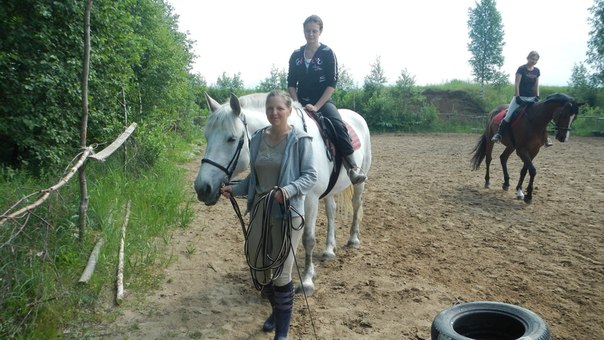
У записи 90 лайков,
0 репостов,
1072 просмотров.
0 репостов,
1072 просмотров.
Эту запись оставил(а) на своей стене Александра Румянцева

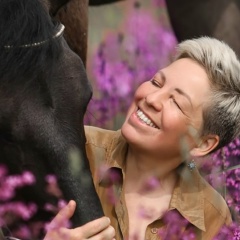



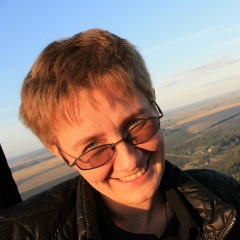
























































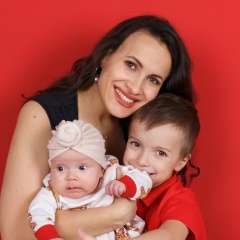




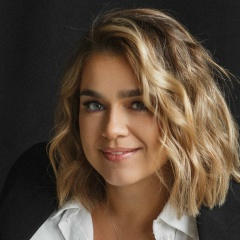
![Марина Любас [ и ] Марина Любас [ и ]](https://sun9-24.vkuserphoto.ru/s/v1/ig2/11VHwOrgQnrdJrHkTCP1FRarX6LeNGJaD961cxQn9llDZ0o2GkEhASZQJNB2LQETC9JimikBI0XGXPr4IMYBj0F_.jpg?quality=95&crop=0,317,1920,1920&as=32x32,48x48,72x72,108x108,160x160,240x240,360x360,480x480,540x540,640x640,720x720,1080x1080,1280x1280,1440x1440&ava=1&cs=200x200)


